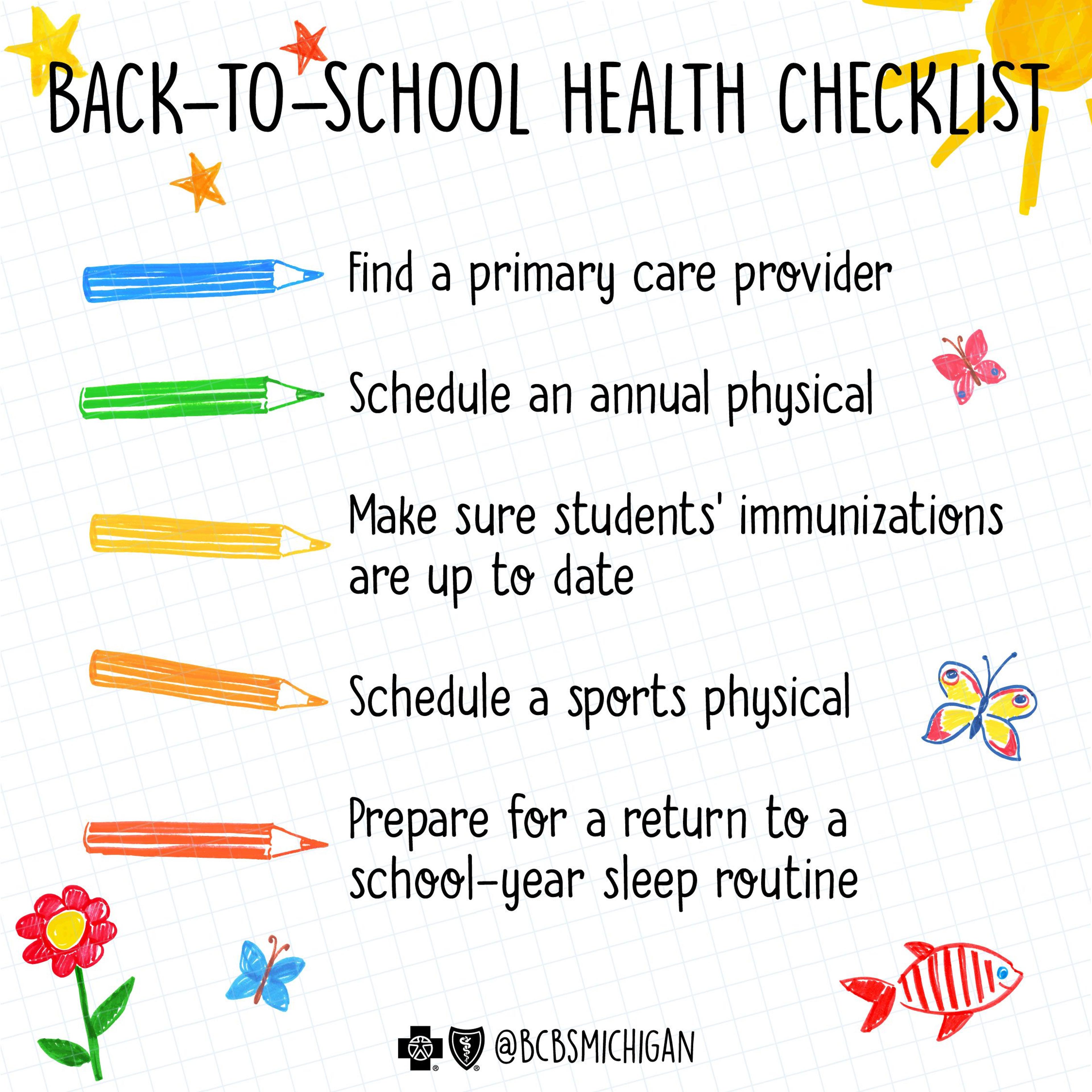Don’t Forget These 5 Things on Your Back-to-School Checklist

James Grant, M.D.
| 3 min read
James D. Grant, M.D., is executive vice president an...

It’s never too early to start planning to return to school, especially when it comes to scheduling health screenings and annual physicals for students. As children and adolescents grow and mature, they change physically, emotionally and socially.
To help parents get a head start on the next school year, here are five items to include in a back-to-school health checklist:
1. Find a primary care provider.
Parents who don’t already have a pediatrician or family practitioner can start researching available physicians in their area who suit their child’s health needs and participate with their health plan. Friends and family members may have physician recommendations to consider. Some physicians offer the opportunity to meet with them ahead of time over a video chat. This can help parents feel comfortable with the physician they have chosen and confident of his or her ability to care for their child or teen.
2. Schedule an annual physical.
In an annual physical, a pediatrician or family doctor will not only check a child’s physical health, but also will check for developmental milestones and address any behavioral or social concerns. Doctors also will provide parents with health guidance for the upcoming year. It’s a good idea to book this appointment well in advance, because doctors’ schedules can fill up quickly.

3. Make sure students’ immunizations are up to date.
The COVID-19 vaccine is just one of the vaccinations a child or adolescent may need before starting school. In Michigan, students in grades K-12 must receive a series of vaccines to attend school. Immunizations are critically important protection against harmful and highly contagious illnesses like measles, mumps and whooping cough. These illnesses have seen a re-emergence after decades of near elimination.
4. Schedule a sports physical.
Children and adolescents who participate in a sports activity or on a school athletic team may need to have a sports physical before they can play. Often, this can be completed during an annual physical. Even if a sports physical is not required, it’s a good idea for children and adolescents to get one if they are participating in any athletic activities. In a sports physical, the doctor examines the child’s fitness level and assesses any conditions or factors that may increase their risk for injury. Doctors also will evaluate any chronic conditions, such as asthma, and discuss strategies to appropriately manage the condition and meet the demands of the physical activity.
5. Prepare for a return to a school-year sleep routine.
After long days and later nights during the summer, it can take some time for bodies to get used to the earlier bedtimes and wake-ups needed for school. A few weeks before school starts, gradually make bedtime earlier in 15-minute increments. This allows the body time to adjust so children and adolescents will be refreshed and ready for the school day.
James D. Grant, M.D. is chief medical officer at Blue Cross Blue Shield of Michigan.
More from MIBluesPerspectives:
Photo credit: Getty Images





